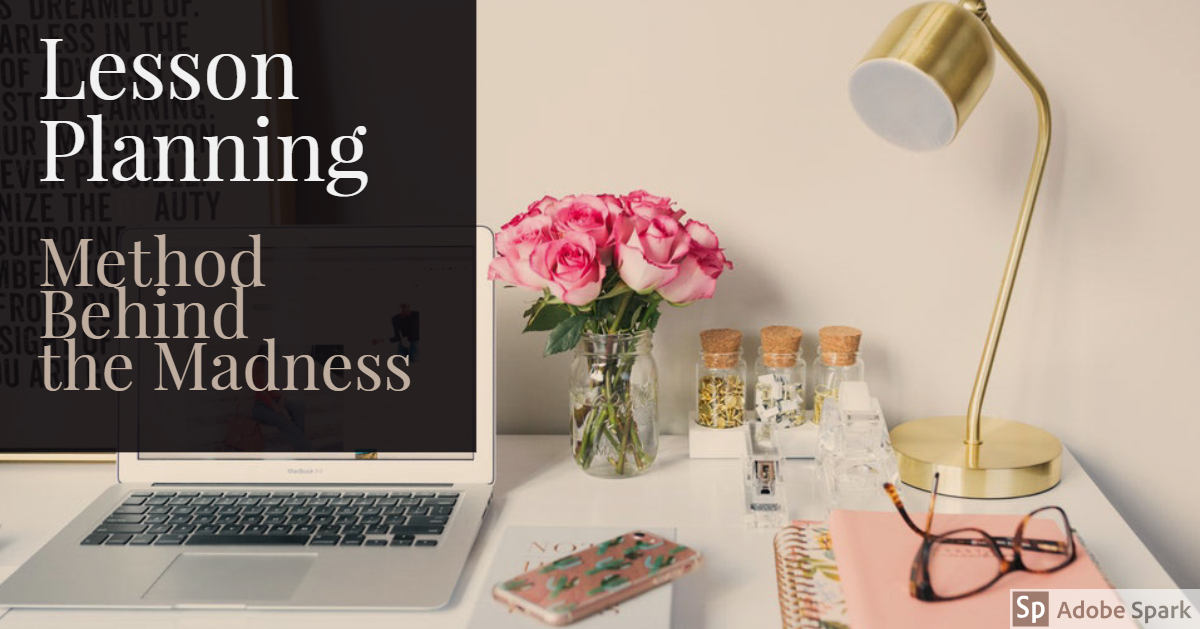LESSON PLANNING FROM START TO FINISH
A place for everything and everything in it’s place… well, sort of. It’s taken years to get my lesson plan technique to where it is today. I’ve looked back at past lesson plans and cringed at how simplistic they looked. And then there’s the flip side: I long for the simplicity of yesteryear. I think I’ve found a balance, though, that allows me to have the best of both worlds.
1. LESSON PLANS
Like most teachers, I organize everything I teach into lesson plans. For each class that I teach (Theatre 1l-3, Stagecraft 1-2, Academic Reading & Drama Survey), I create a separate lesson plan for each unit within that class. Some units last longer than others. Some might last a week or two while others may take three – four weeks.
My lesson plans are written up as formal UBD’s (Understanding By Design) which is a format that lays out the goals, assessments, and plans for each unit. This is not a format that I created. I remember learning about them in college years ago. I’ve only in the last few years really started putting this format to use at its fullest potential. Basic layouts for a UBD are easily found online. Here are the key elements of the one that I use:
-
 Stage 1: Desired Results (Goals)
Stage 1: Desired Results (Goals)- Understandings: what the students will understand, know, and be able to do. These come from both my frameworks and the text that I teach from.
- Essential Questions: important questions that I want the students to ponder and be able to answer by the end of the unit
-
Stage 2: Assessment Evidence
- Performance Tasks: How students will demonstrate what they know
- Other Evidence: Formal and Sumative Assessment
-
Stage 3: Learning Plan
This is where I lay out everything that I do in my classroom, on what day I plan to do it, and how I intend to do it.
- Daily Objective (These are what I write on the board for each of my classes so that they will know what they’re learning that day or week, depending on the length of the lesson.)
- SLE (Student Learning Expectation): basically my frameworks
- Tasks/Activities
- Strategies (I like to list my sources in this section as well.)
2. MODIFY AND ADJUST
Lesson plans guide my teaching. Then, I reflect on my lessons and modify and adjust them depending on what did or didn’t happen or work in class that day. During productions, this step may happen at the end of the week as I’m planning the next week’s lessons. Some lessons take longer than anticipated while at others were interrupted (testing, drills, pep rallies, etc). Other times, students work faster than anticipated, and we get ahead. I over plan for days so that I’m not blindsided when over-productivity hits. Either way, the journal helps me keep up with what we actually accomplished in class from day to day.
3. LESSON PLAN JOURNAL
With five preps/classes to prepare for along with whatever productions and tournaments that I’m preparing for, my short term memory can’t always hold everything that I need to remember. It is relieving to be able to offload my thoughts in a journal so that I won’t forget. This also helps to make room for more incoming information. 
My lesson plan journal has been such a success that I’ve added it to my daily routine. At the end of each period or day, I write brief notes of what we did in each class that day. If a student asks what we did in class while they were absent, I can grab my lesson plan journal. Writing in it relieves me of forgetting what we did in class from day to day. I even tend to look at these notes just prior to each class to jolt my memory.
Lesson plans are great, but the journal just feels a bit more personal to me. I treat my Lesson Plan Journal sort of like a bullet journal, except with after the fact notes, rather than a to-do list. Doodling and adding stickers and stamps makes it even more fun. Tabbing each  week with Washi tape or any other colored tape helps to keep it organized. Students have remarked that they’d keep notes on what their homework is if they had a planner like mine (Of course they’re more than welcome to make their own.).
week with Washi tape or any other colored tape helps to keep it organized. Students have remarked that they’d keep notes on what their homework is if they had a planner like mine (Of course they’re more than welcome to make their own.).
The lesson plan journal is a Composition Book covered in decorative duct tape, with a decorative scrapbook frame and some stickers that I used to label the front. I covered that the front label with clear packing tape so that it wouldn’t come off with repeated use and abuse. One of my students gifted me a cute set of paperclips for Christmas, and I use the heart one to mark my current week. I found a Date Stamp and some Washi Tape with the days of the week for mark my days depending on my current mood.
My lesson plan journal is cathartic at the end of each day as it allows me to wrap up and be creative at the same time. Each year, as I update my lesson plans, I reference my journal to double check what worked and what didn’t. I hope you’ve found a bit of inspiration that will aid you in your lesson planning process. Check back for more tips and inspiration for your classes and productions!








I have started using journals to plan my day, so helpful! I was better about it while I was teaching, but it goes for everything you do. Plan it, do it.